
1. Natural Stone Terraced Walkway with Native Plantings

Transform steep slopes into captivating terraced pathways using natural fieldstone or flagstone arranged in stepped platforms. Each terrace level features native plants that stabilize soil while creating visual interest throughout seasons. Stone risers range from 6-8 inches in height with 12-inch treads for comfortable navigation. Gaps between stones allow water drainage while supporting moss or groundcover growth. This design mimics natural rock formations and integrates seamlessly with wooded or mountainous settings, providing both erosion control and timeless rustic elegance.
2. Stamped Concrete Switchback Pathway with Integrated LED Lighting
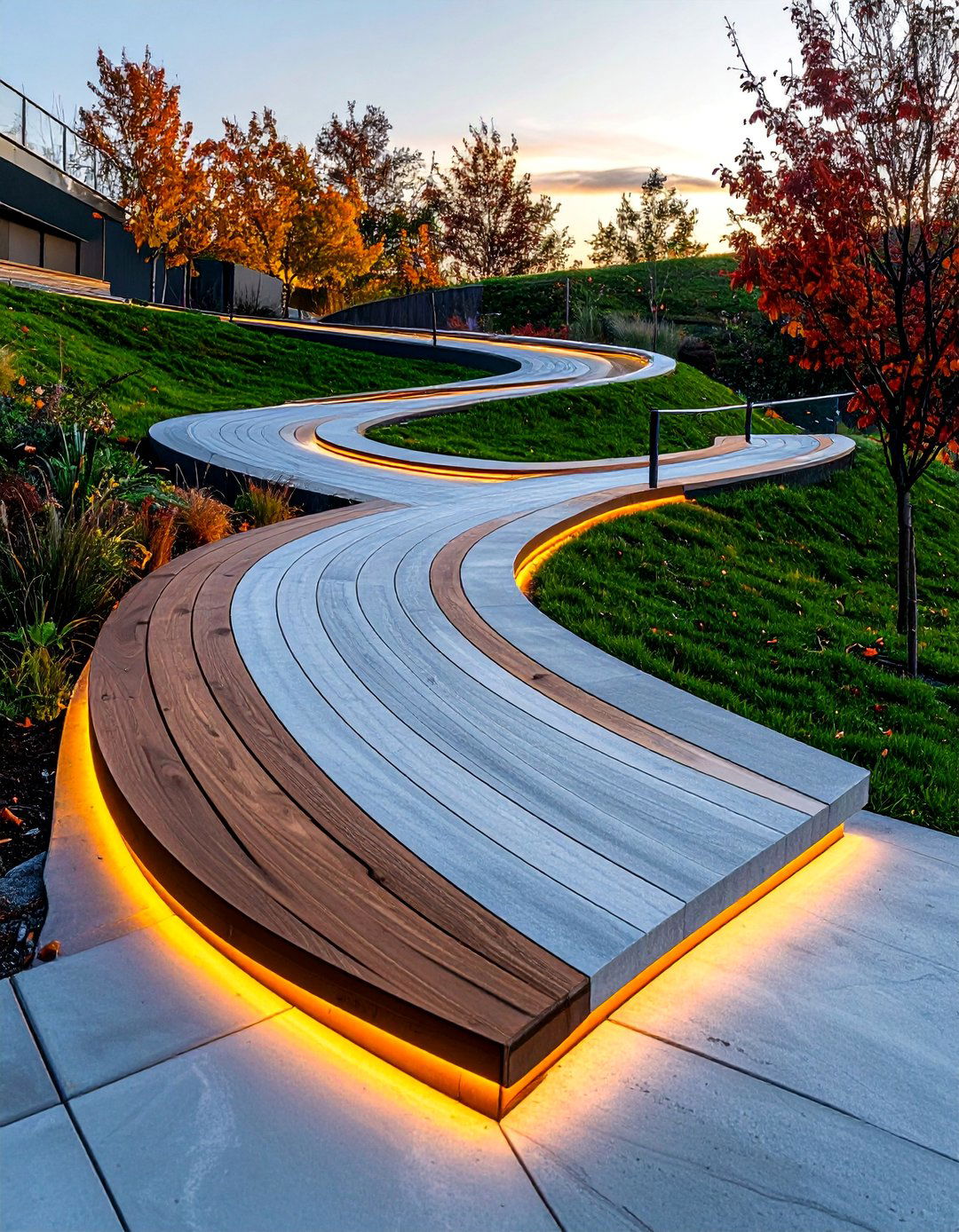
Create a modern solution for steep grades using switchback design with stamped concrete surfaces mimicking natural stone or wood textures. Built-in LED strip lighting along pathway edges ensures safe navigation during evening hours while highlighting the decorative patterns. Each switchback segment features gentle 2% slopes with 36-inch minimum width for comfortable two-person passage. Colored concrete in earth tones complements landscape surroundings while textured surfaces provide slip resistance. This contemporary approach combines safety, durability, and sophisticated aesthetics for challenging terrain.
3. Brick Herringbone Sloped Walkway with Decorative Borders
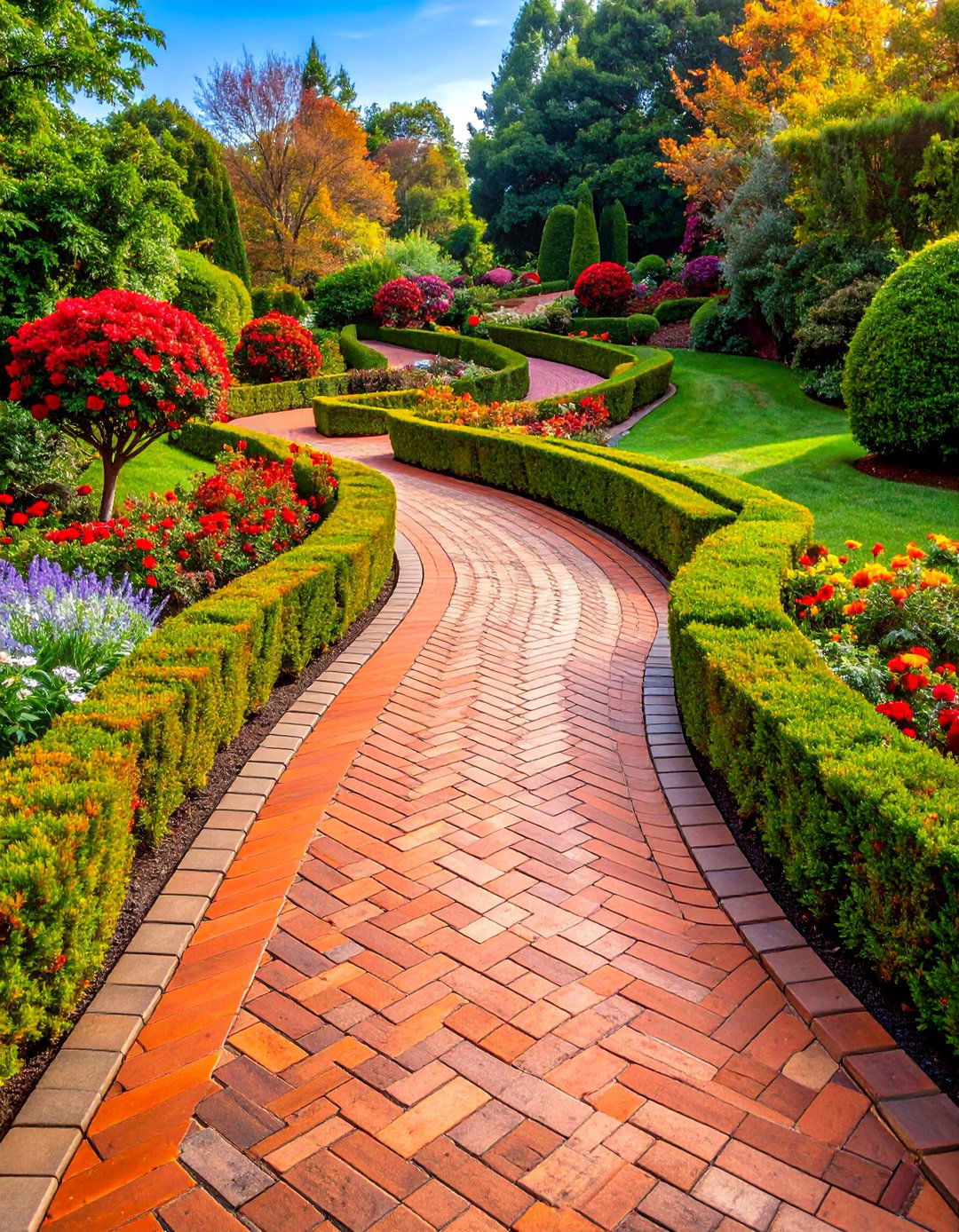
Design an elegant sloped pathway using traditional clay bricks arranged in classic herringbone patterns for enhanced grip and visual appeal. Contrasting brick borders in soldier course pattern define edges while complementing main field. Mortar joints filled with sand allow flexibility during freeze-thaw cycles while maintaining stability. Gentle slopes up to 5% accommodate various terrain challenges while brick's natural texture prevents slipping. Surrounding landscape features low boxwood hedging or perennial borders that soften hardscape elements and create formal garden atmosphere.
4. Decomposed Granite Ramp with Steel Edging and Drought-Tolerant Landscaping

Utilize decomposed granite to create smooth, wheelchair-accessible ramps perfect for arid climates and contemporary designs. Clean steel edging provides crisp boundaries while permeable surface allows excellent drainage during occasional rainfall. Maximum 8% gradient ensures ADA compliance while stabilizing additives prevent erosion. Flanking drought-resistant plants like ornamental grasses, succulents, and native shrubs create water-wise landscapes requiring minimal maintenance. This eco-friendly approach suits modern architectural styles while addressing accessibility needs and environmental consciousness in challenging slope conditions.
5. Timber Plank Boardwalk with Handrails Over Steep Terrain

Construct elevated timber walkways using pressure-treated lumber or composite decking materials for slopes exceeding safe walking grades. Built on concrete pier foundations, these structures span challenging terrain while preserving natural grade below. Sturdy handrails provide safety support while wide planks accommodate wheelchairs and maintenance equipment. Natural wood stain finishes blend with woodland settings while composite options offer longevity with minimal maintenance. This solution works exceptionally well for environmentally sensitive areas where minimal ground disturbance is essential.
6. Pea Gravel Meandering Path with Boulder Retaining Features

Design informal walkways using pea gravel surfaces that curve gently through sloped terrain, following natural contours for organic appeal. Large boulders strategically placed serve dual purposes as seating areas and informal retaining structures that prevent erosion while maintaining pathway integrity. Gravel's permeable nature handles drainage effectively while comfortable walking surface accommodates various footwear. Native wildflower plantings between boulder groupings attract pollinators and provide seasonal color. This naturalistic approach suits cottage gardens, woodland settings, and informal landscape styles requiring minimal maintenance.
7. Concrete Pavers with Grass Joints in Geometric Patterns

Create contemporary sloped pathways using large-format concrete pavers with grass-filled joints arranged in running bond or modern geometric layouts. Living joints provide environmental benefits through stormwater management while softening hardscape appearance. Pavers' substantial weight and interlocking design resist shifting on slopes while textured surfaces ensure safe footing. Regular maintenance includes occasional overseeding of grass joints and edge trimming. This design bridges formal and informal garden styles while addressing environmental concerns through permeable surface treatment and reduced runoff.
8. Flagstone Steps with Integrated Planting Pockets
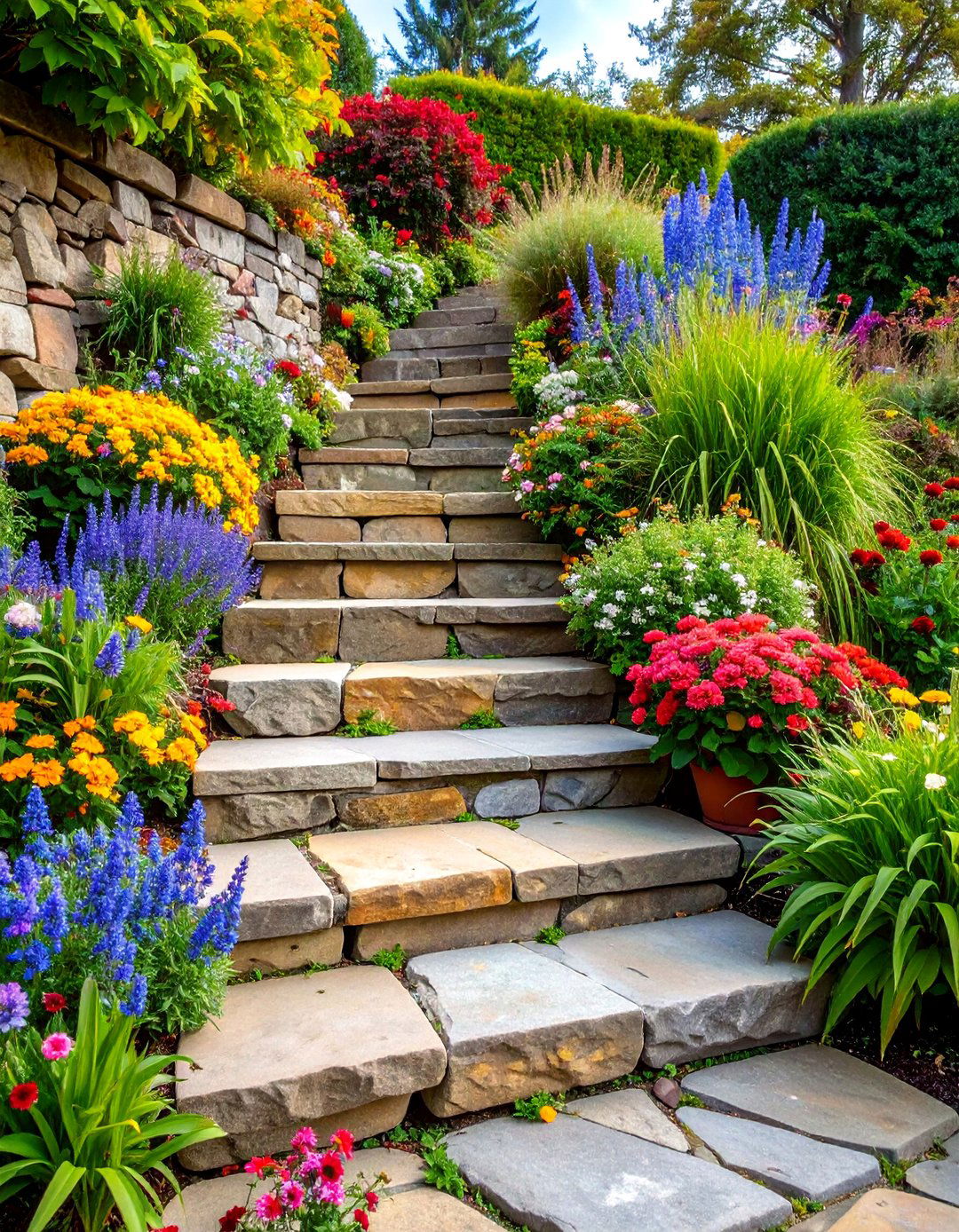
Design naturalistic stepped pathways using irregularly shaped flagstone with planted gaps that soften transitions between levels. Each step incorporates small planting pockets filled with low-growing perennials, herbs, or groundcovers that provide fragrance and texture. Stone thickness varies from 2-4 inches while consistent riser heights maintain safety standards. Mortared joints in high-traffic areas contrast with planted joints in decorative zones. This approach creates living staircases that evolve seasonally while maintaining structural integrity and providing comfortable navigation through significant elevation changes.
9. Recycled Brick Pathway with Permeable Mortar Joints

Construct environmentally conscious walkways using reclaimed bricks laid in traditional patterns with permeable mortar allowing water infiltration. Weathered brick surfaces provide character and slip resistance while varied coloration creates visual interest. Sand-swept joints accommodate slight movement while maintaining stability on gentle slopes. Antique brick's proven durability ensures decades of service while supporting sustainable building practices. Complementary plantings of period-appropriate flowers and herbs enhance historical garden themes while providing modern environmental benefits through reduced stormwater runoff.
10. Mulch Pathway with Timber Edge Restraints and Rain Gardens

Create budget-friendly, eco-conscious walkways using organic mulch materials contained within pressure-treated timber edging systems. Three-inch mulch depth provides comfortable walking surface while suppressing weeds and retaining moisture for adjacent plantings. Strategically placed rain gardens collect runoff from slopes above, filtering water naturally while supporting native plant communities. Annual mulch refreshing maintains appearance and functionality while contributing organic matter to surrounding soil. This sustainable approach suits woodland gardens, naturalistic landscapes, and environmentally sensitive sites requiring minimal environmental impact.
11. Exposed Aggregate Concrete Ramp with Textured Safety Strips

Design slip-resistant concrete ramps using exposed aggregate finish that reveals decorative stone or glass elements for enhanced traction and visual appeal. Integrated tactile warning strips at grade changes meet accessibility standards while colored concrete complements architectural elements. Professional installation ensures proper slope calculations and drainage considerations for long-term performance. Aggregate selection influences both appearance and functionality, with larger stones providing superior grip. This durable solution accommodates heavy use while maintaining attractive appearance suitable for commercial or residential applications requiring accessibility compliance.
12. Cobblestone-Pattern Stamped Asphalt with Decorative Edging

Achieve traditional cobblestone appearance using modern stamped asphalt technology that provides superior durability and weather resistance compared to individual stones. Integral coloring and realistic texturing create authentic European street atmosphere while smooth surface accommodates various mobility needs. Decorative concrete or stone edging defines pathway boundaries while complementing surrounding hardscape elements. Professional installation ensures proper base preparation and drainage for longevity. This cost-effective alternative to genuine cobblestone suits period architecture while offering contemporary performance standards and reduced maintenance requirements.
13. Gravel Steps with Steel Riser Plates and Integrated Drainage
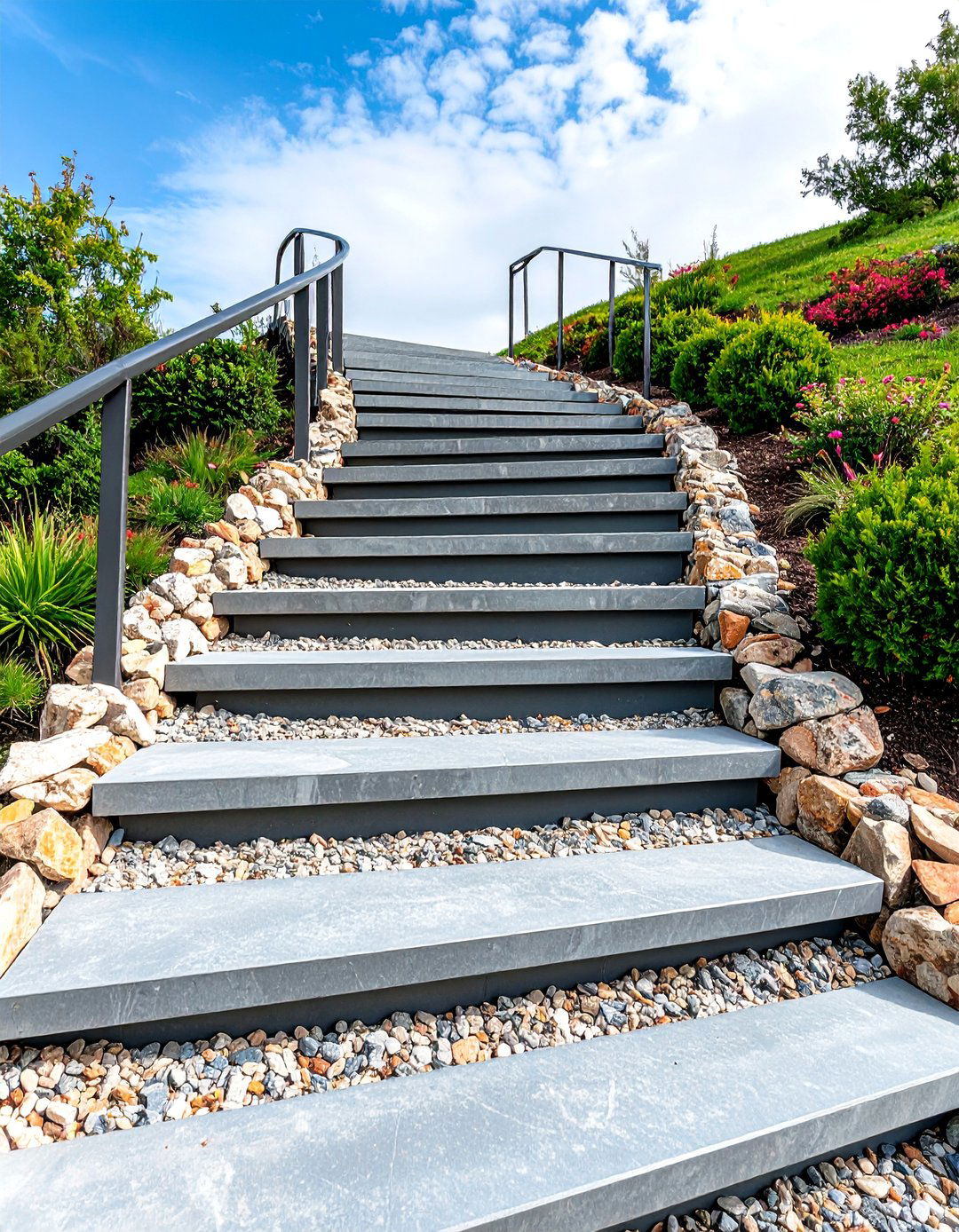
Construct modern stepped pathways using weathering steel riser plates filled with crushed stone treads that provide industrial aesthetic with superior functionality. Steel edges contain gravel while creating clean lines suitable for contemporary architecture. Perforated riser plates allow water drainage while maintaining structural integrity during freeze-thaw cycles. Cor-Ten steel develops protective rust patina eliminating ongoing maintenance while complementing natural landscape colors. Gravel treads provide excellent traction while accommodating site-specific drainage requirements. This innovative approach suits modern gardens requiring durable, low-maintenance solutions.
14. Rubber Walkway Mats Over Existing Mulch Beds

Install permanent rubber pathway systems designed to mimic natural mulch appearance while providing stable, accessible walking surfaces over existing landscape beds. Interlocking mat sections create continuous pathways that accommodate wheelchairs while protecting underlying plantings from foot traffic damage. Weather-resistant rubber construction withstands temperature extremes while maintaining consistent appearance without annual replacement. Easy installation requires minimal site preparation while allowing seasonal adjustments. This practical solution preserves established landscape investments while improving accessibility and reducing maintenance demands in slope applications.
15. Mixed Material Mosaic Walkway with Cultural Stone Accents
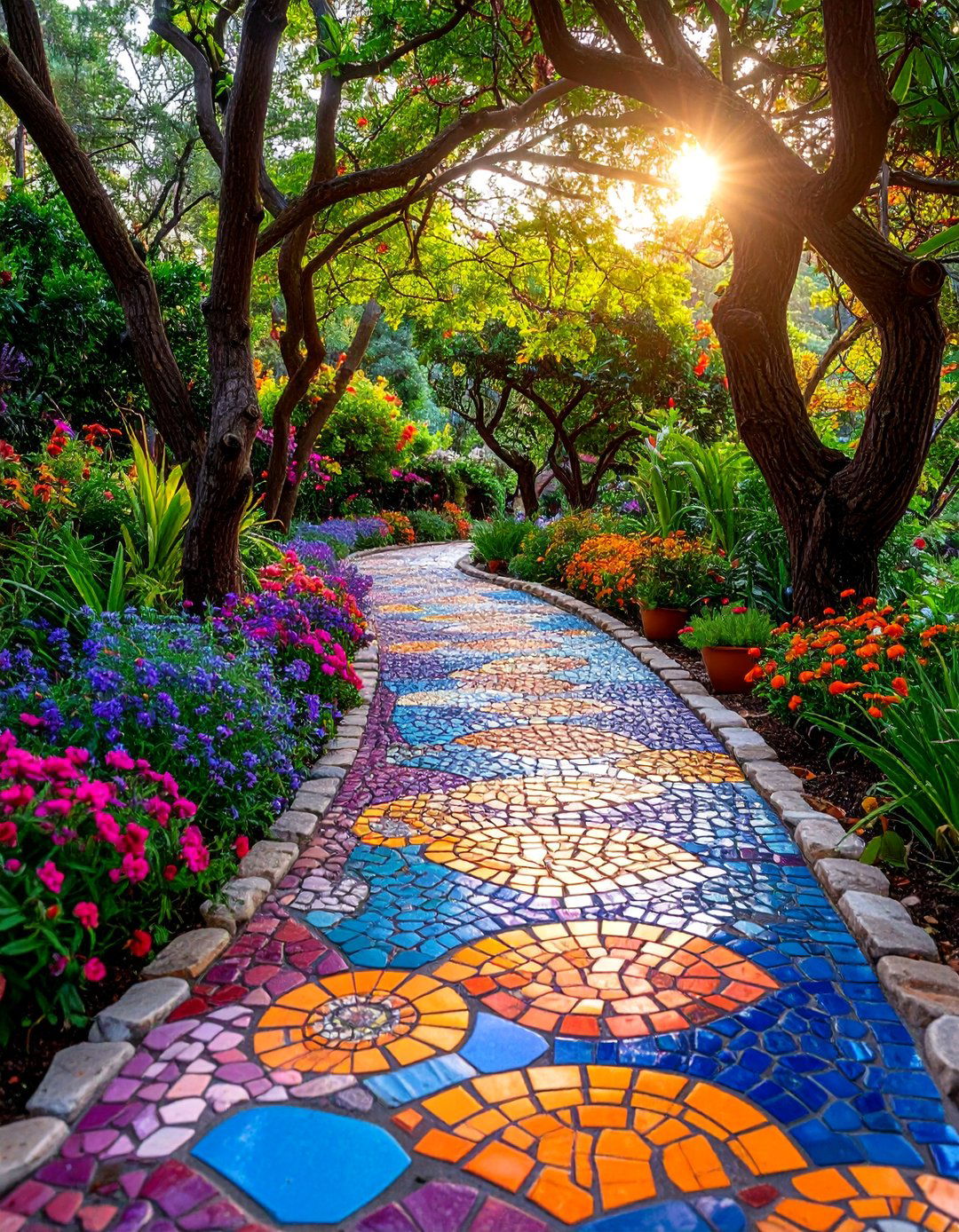
Create artistic pathways combining various materials like broken concrete, ceramic tiles, river stones, and cultural elements arranged in mosaic patterns that tell stories while navigating slopes. Each section features different material combinations unified by consistent color palette or theme. Mortar joints secure elements while allowing creative expression through personal or cultural symbolism. This labor-intensive approach produces unique results that reflect individual personality while addressing functional requirements. Suitable for garden artists and homeowners seeking one-of-a-kind landscape features that appreciate over time.
16. Permeable Concrete Paver System with Bioswale Integration

Design environmentally progressive walkways using permeable concrete pavers that allow stormwater infiltration while maintaining structural integrity on moderate slopes. Integrated bioswales collect and filter runoff while supporting native plant communities that provide habitat and erosion control. Specialized base materials ensure proper drainage while maintaining load-bearing capacity. This green infrastructure approach addresses municipal stormwater requirements while creating attractive, functional pathways. Professional design ensures proper slope calculations and plant selection for local climate conditions while meeting accessibility standards and environmental goals.
17. Stepping Stone Path with Ground Cover Matrix

Create informal walkways using large flat stones spaced for comfortable stride length while surrounding ground cover plants fill gaps between stones. Low-growing varieties like creeping thyme, moss, or native sedums provide living carpet that tolerates occasional foot traffic while stabilizing soil. Stone selection emphasizes consistent thickness while varied shapes maintain natural appearance. This approach works particularly well on gentle slopes where full paving seems excessive while providing defined route through landscape. Seasonal maintenance includes plant grooming and occasional stone releveling.
18. Composite Decking Boardwalk with Cable Railing System

Construct elevated walkways using composite lumber that resists moisture, insects, and weathering while maintaining consistent appearance without staining or sealing requirements. Cable railing systems provide safety without obstructing views while meeting building codes for elevated structures. Hidden fastener systems create smooth surfaces while allowing thermal expansion. This low-maintenance solution spans challenging terrain while preserving natural drainage patterns below. Suitable for contemporary settings requiring durable, attractive pathways that accommodate significant elevation changes without extensive earthwork.
19. Crushed Shell Pathway with Native Grass Borders

Design coastal-inspired walkways using crushed oyster or clam shells that provide excellent drainage and unique texture while reflecting regional character. Shell surfaces compact naturally while maintaining permeability and distinctive appearance that lightens during dry periods. Native grass borders help contain materials while providing habitat for local wildlife. This traditional material choice suits coastal environments while offering sustainable alternative to imported aggregates. Regular maintenance includes occasional shell replenishment and edge trimming while materials weather naturally to enhance rather than detract from appearance.
20. Interlocking Concrete Block Retaining Walls with Integrated Steps

Create functional pathways that incorporate engineered retaining wall systems with built-in step treads for efficient space utilization on steep slopes. Interlocking concrete blocks provide structural integrity while integrated design eliminates separate step construction. Geogrid reinforcement ensures long-term stability while allowing significant grade changes within compact footprint. This engineered approach addresses severe slope challenges while providing attractive, durable results. Professional installation ensures proper drainage and reinforcement while meeting local building codes for retaining structures and accessibility requirements.
21. Stabilized Gravel Pathway with Polymer Binding System

Apply liquid polymer binders to traditional gravel surfaces creating firm, permeable walkways that resist erosion while maintaining natural appearance. Stabilized surfaces accommodate maintenance vehicles while providing comfortable pedestrian access through sloped terrain. Professional application ensures proper coverage and curing while maintaining porosity for drainage. This innovative approach bridges gap between loose aggregate and hard surfaces while offering long-term durability with minimal maintenance. Color options allow customization while natural materials blend seamlessly with landscape surroundings. Suitable for parks, gardens, and residential applications requiring accessible yet natural pathways.
22. Wooden Stairway with Integrated Lighting and Landscaping
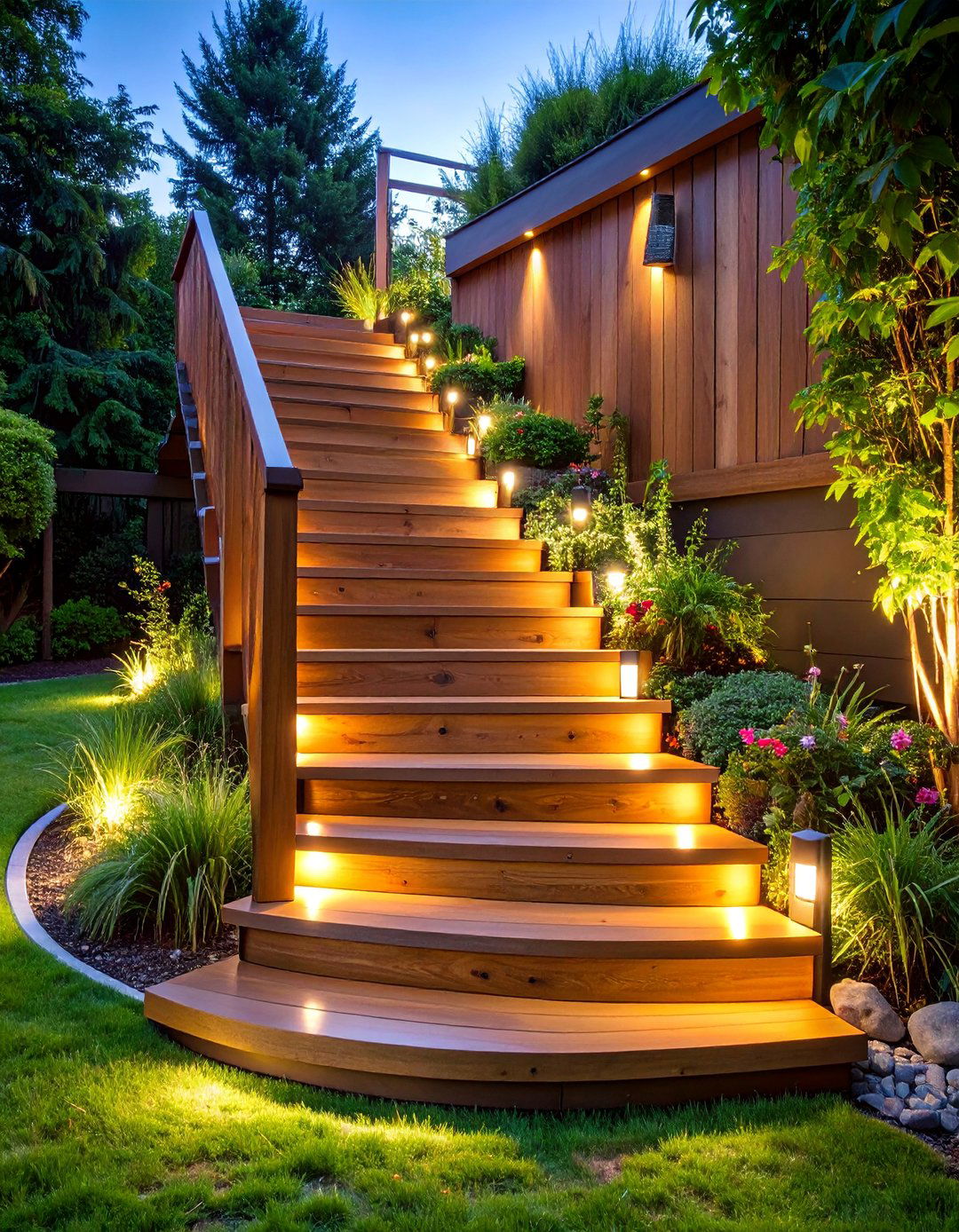
Construct formal wooden staircases using quality lumber with built-in LED lighting systems that illuminate treads and risers for safe evening navigation. Integrated planter boxes between stair flights support seasonal displays while softening hardscape elements. Professional design ensures code compliance while custom detailing reflects architectural style. Weather-resistant finishes protect investment while regular maintenance preserves appearance and safety. This substantial approach suits formal gardens and architectural settings requiring elegant solutions to significant elevation changes while accommodating evening entertainment and daily use.
23. Decomposed Granite Switchback Trail with Interpretive Elements

Design educational pathways using decomposed granite surfaces arranged in switchback pattern that reduces grade while providing opportunities for interpretive signage and rest areas. Native plant demonstrations and geological features create outdoor classroom atmosphere while stabilizing soil and providing habitat. Bench placement at switchback turns encourages contemplation while managing pathway length. This approach suits parks, nature centers, and educational institutions where pathway serves dual purpose as transportation route and learning environment. Professional design ensures accessibility while maintaining educational value.
24. Modular Plastic Grid System with Decorative Aggregate Fill

Install engineered plastic grid systems filled with decorative stone, shells, or recycled materials creating permeable, stable walkways suitable for slopes up to 20%. Modular components accommodate irregular shapes while providing load distribution for maintenance vehicles. Various fill materials allow customization while maintaining structural performance and drainage characteristics. This contemporary approach offers rapid installation with immediate use while supporting heavy loads. Suitable for modern landscapes requiring durable, environmentally conscious solutions that accommodate both pedestrian and vehicular access through challenging terrain.
25. Living Staircase with Terraced Planting and Stone Treads
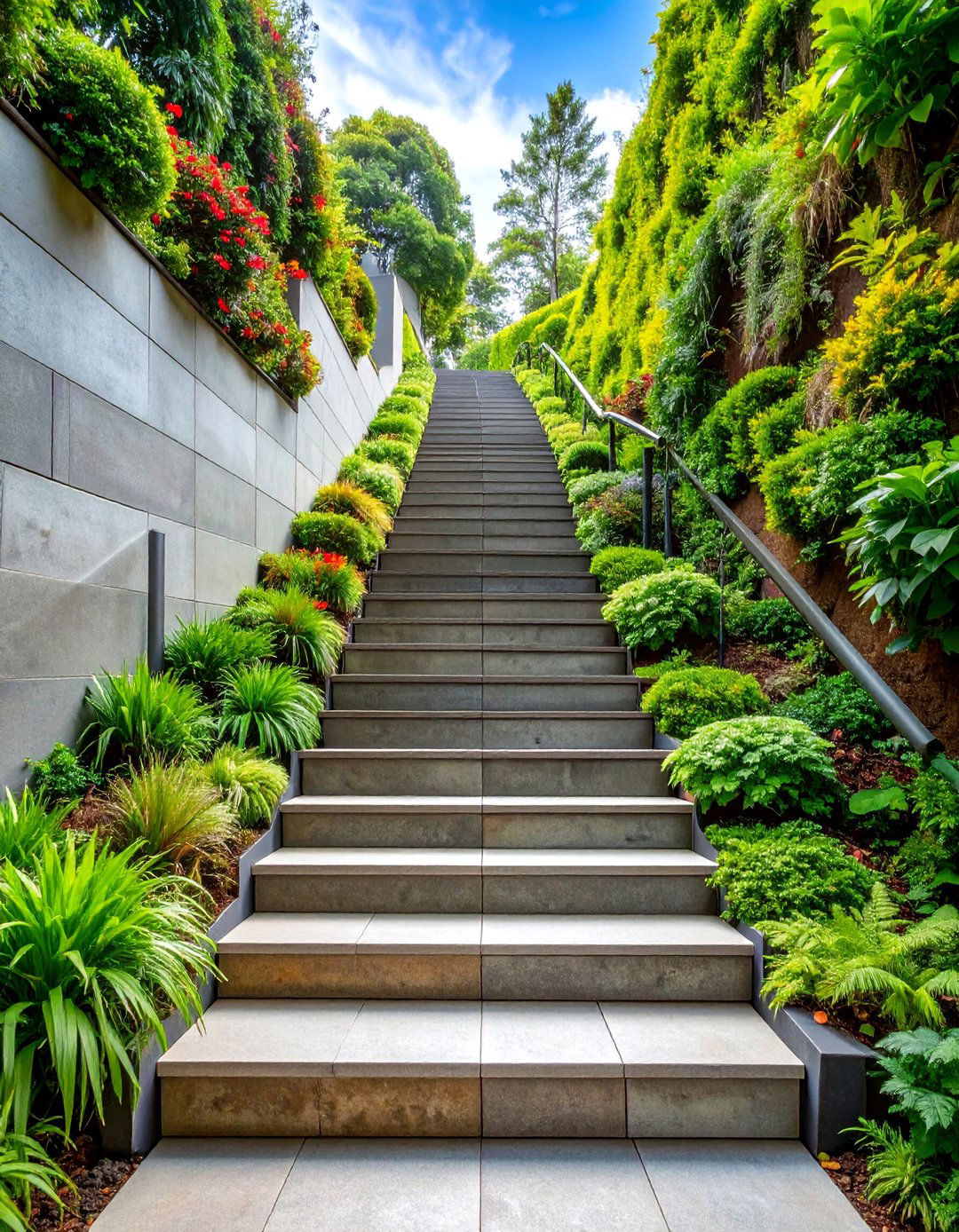
Create sustainable pathways combining structural stone treads with terraced planting areas that provide erosion control while creating vertical gardens on steep slopes. Each planting terrace supports different plant communities based on exposure and drainage characteristics. Stone treads provide safe navigation while planted areas filter runoff and provide habitat. This intensive approach requires ongoing maintenance but creates unique garden experiences that evolve seasonally. Suitable for garden enthusiasts seeking to transform challenging slopes into productive, beautiful landscape features that address environmental concerns while providing functional access.
Conclusion:
These sloped walkway designs demonstrate that challenging terrain presents opportunities rather than obstacles for creative landscape solutions. From simple mulch paths to sophisticated engineered systems, each approach addresses specific site conditions while reflecting personal style preferences. Success depends on matching design complexity with maintenance capabilities while considering long-term durability and environmental impact. Professional consultation ensures proper installation and code compliance for complex projects.


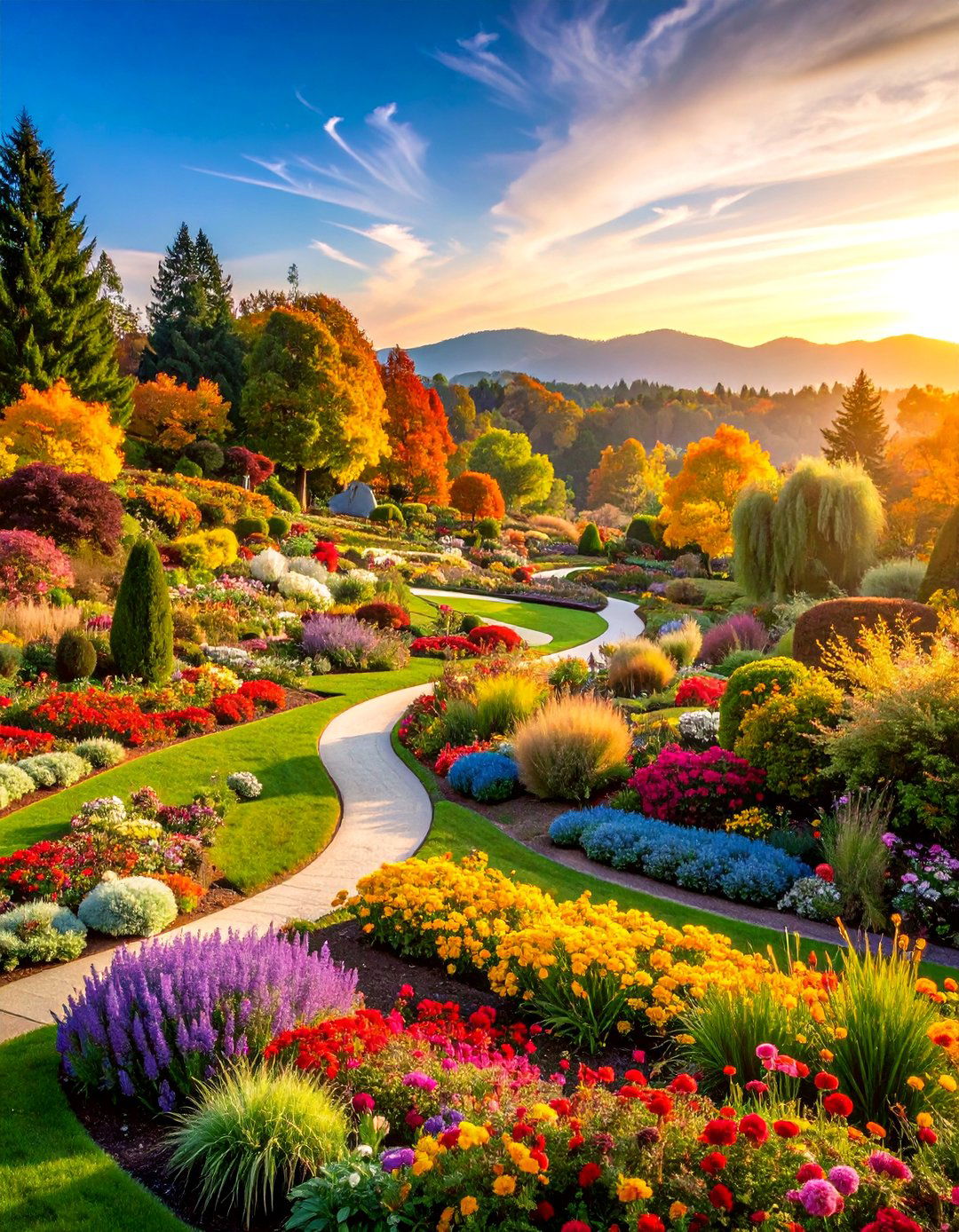
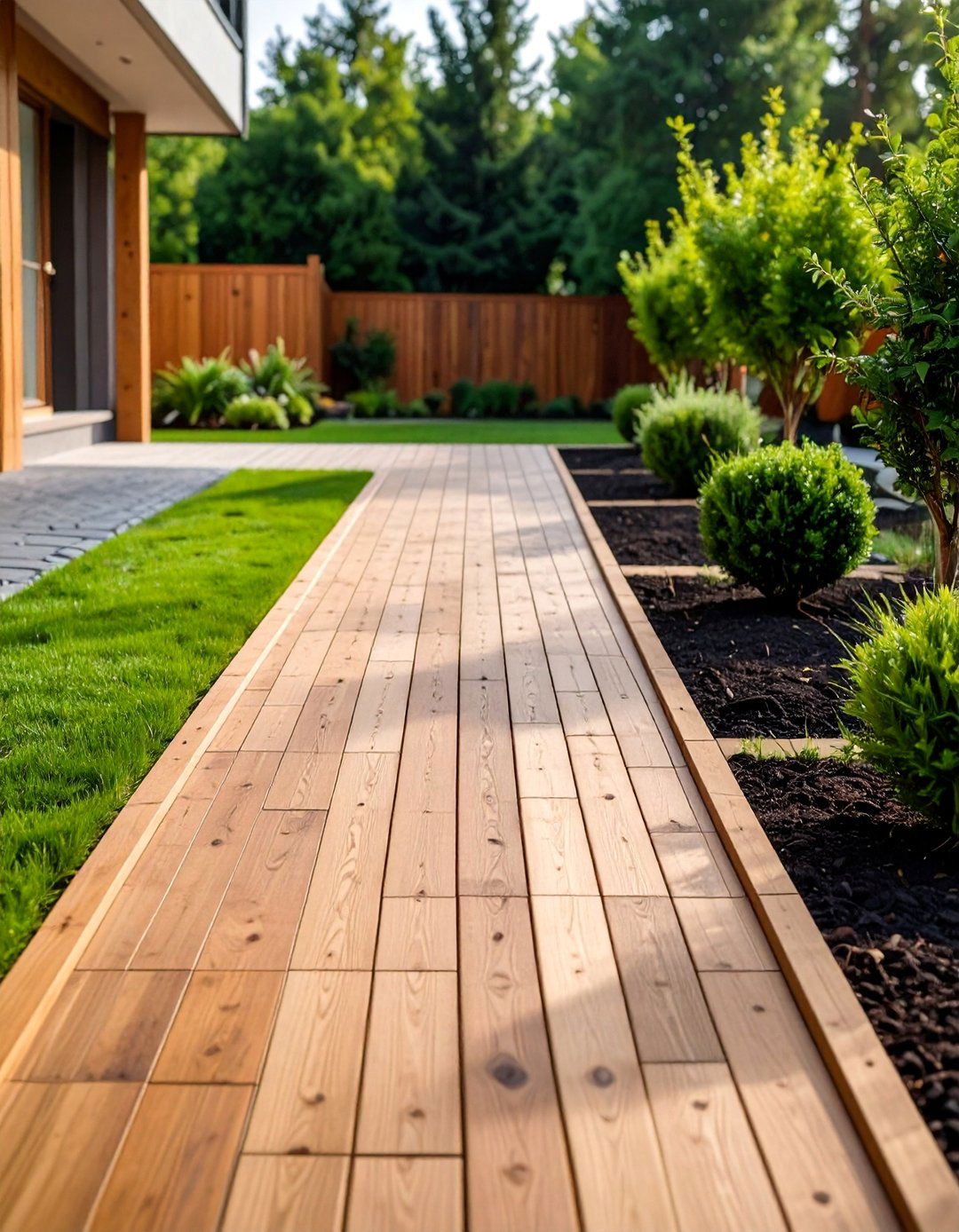
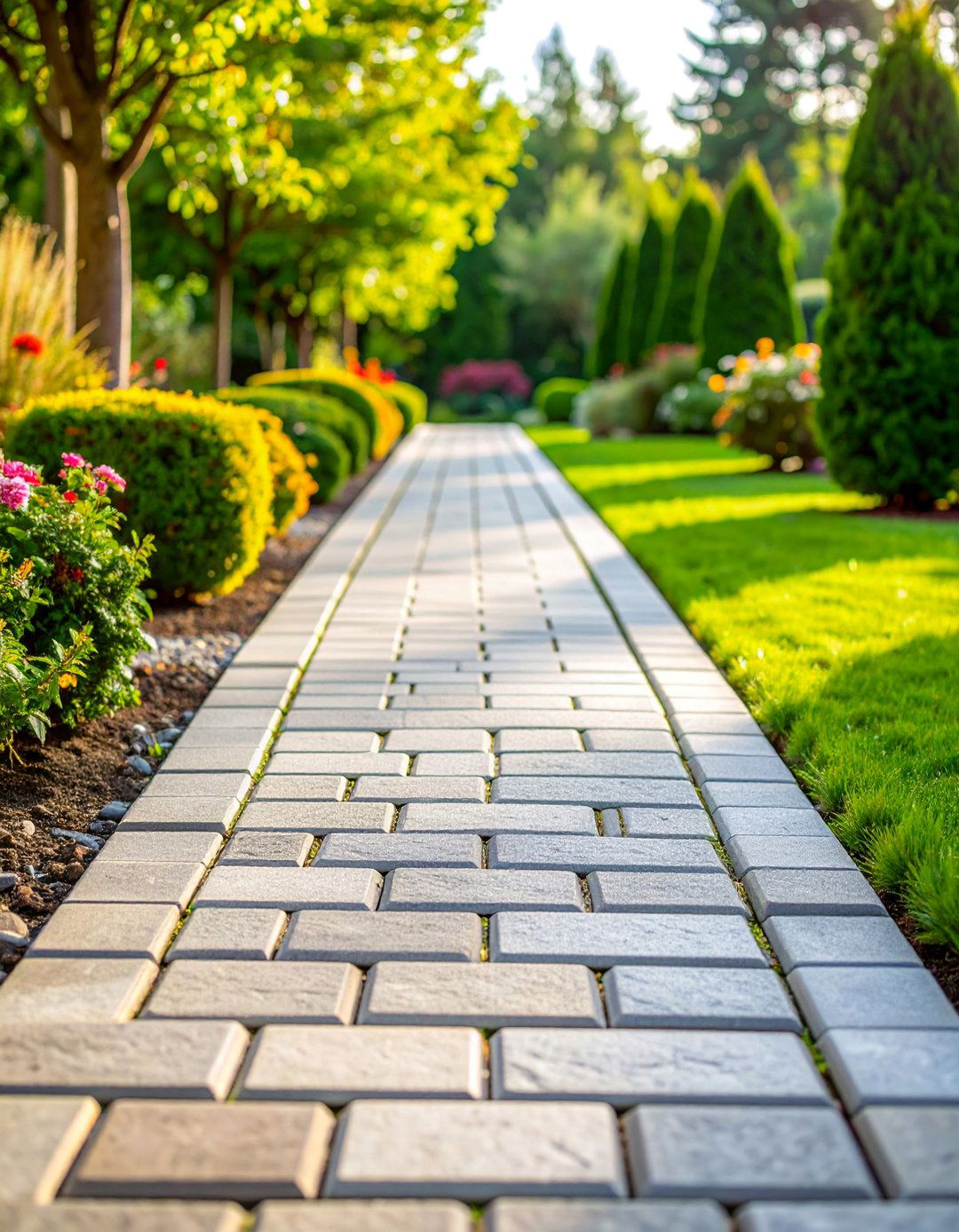



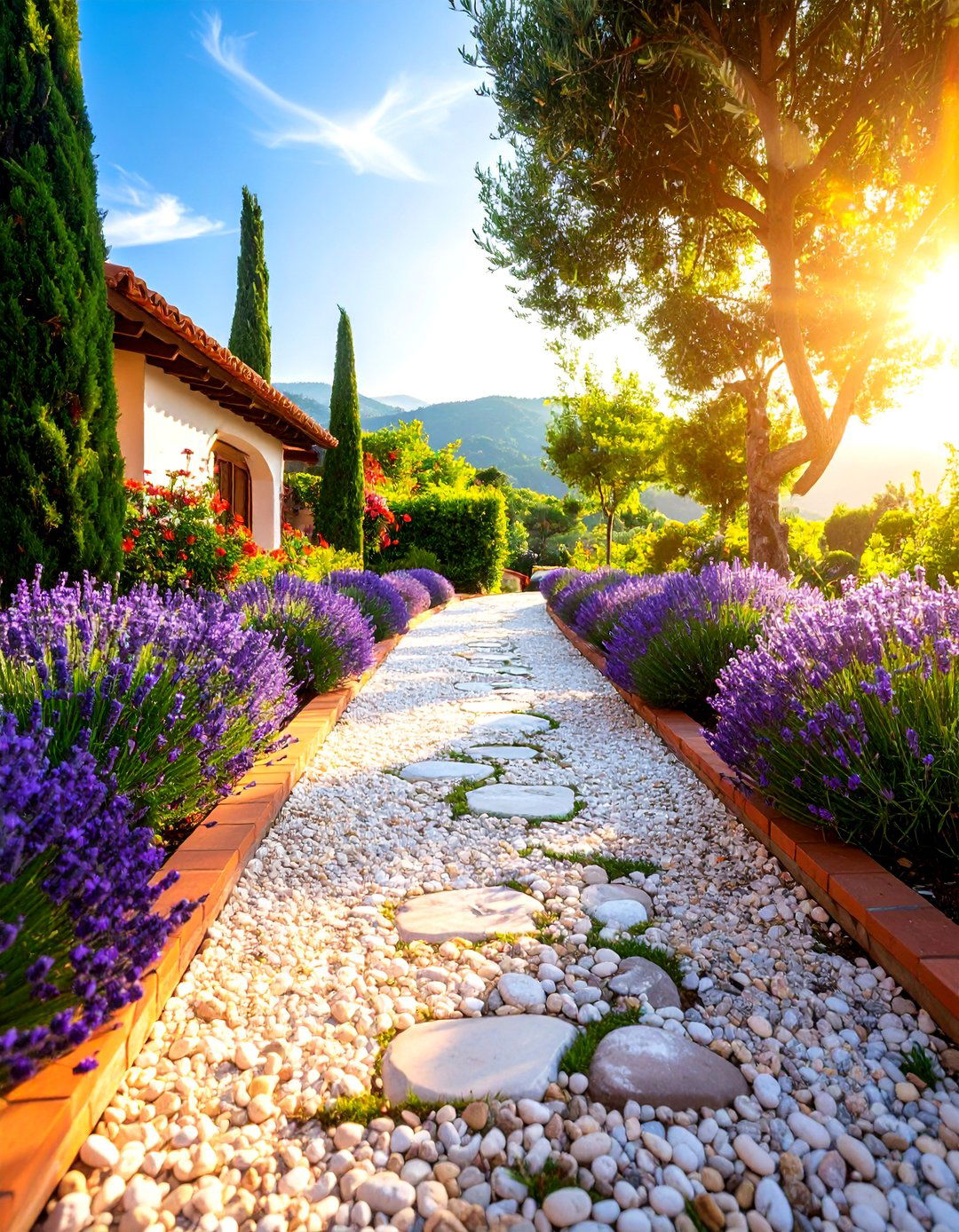



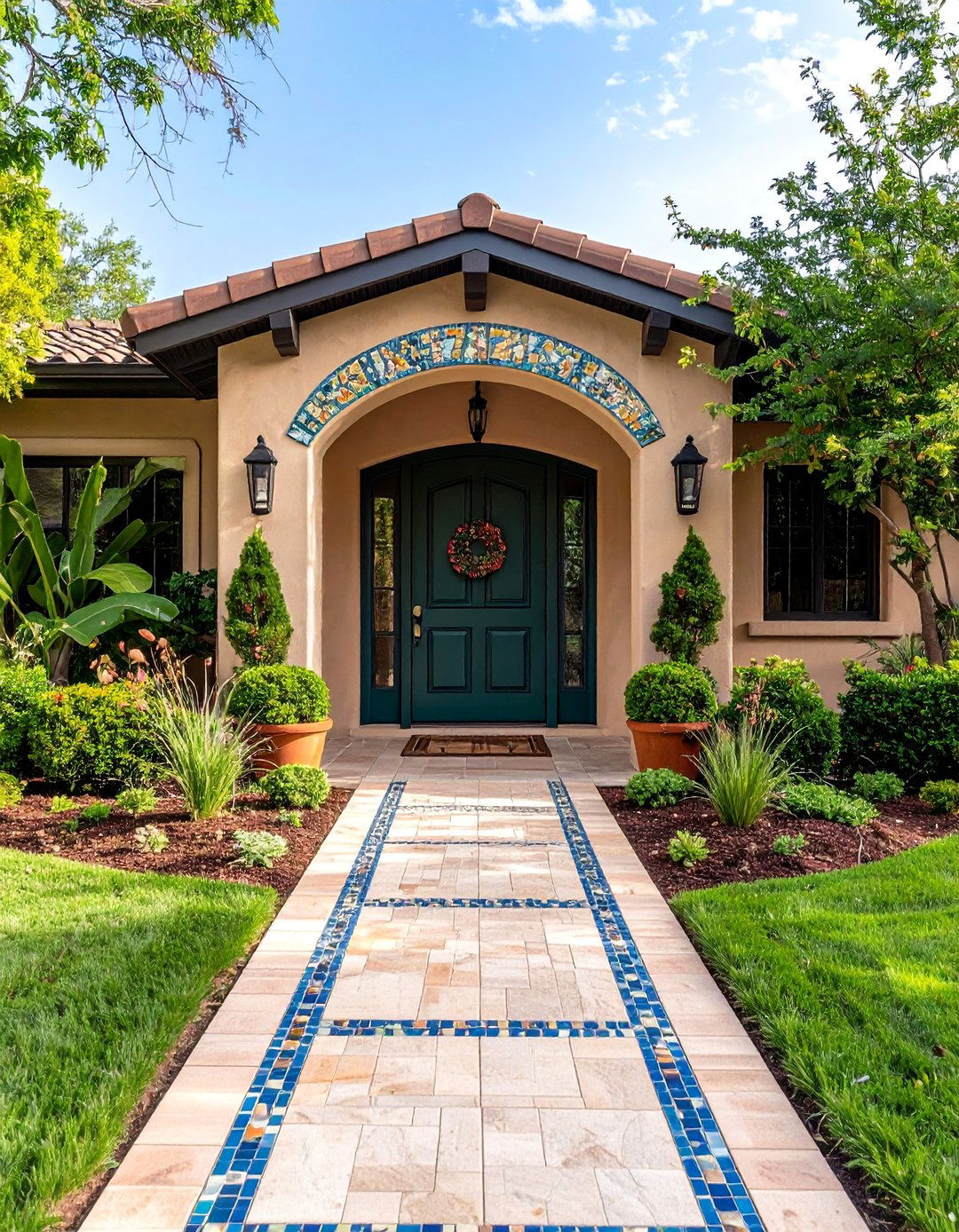
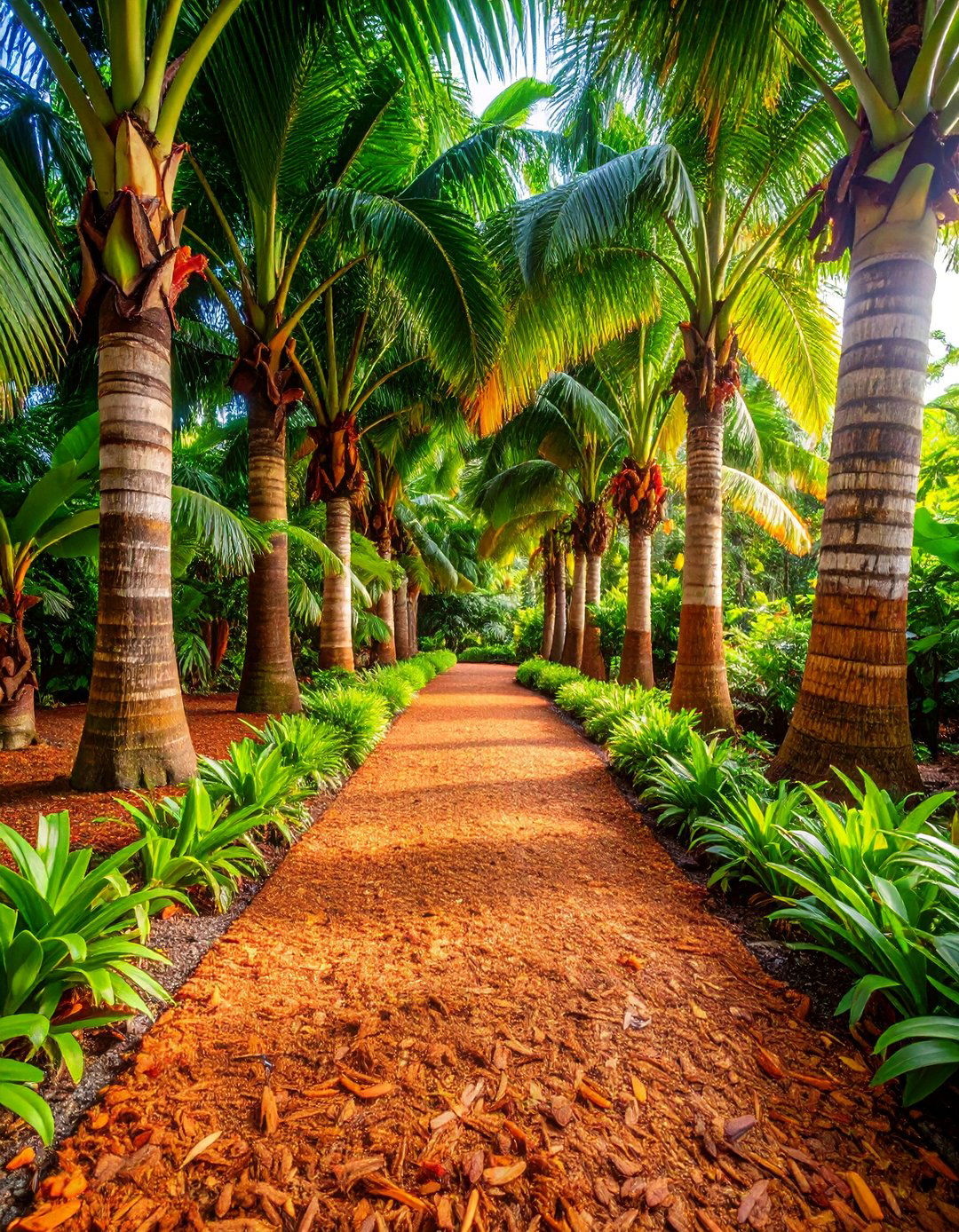
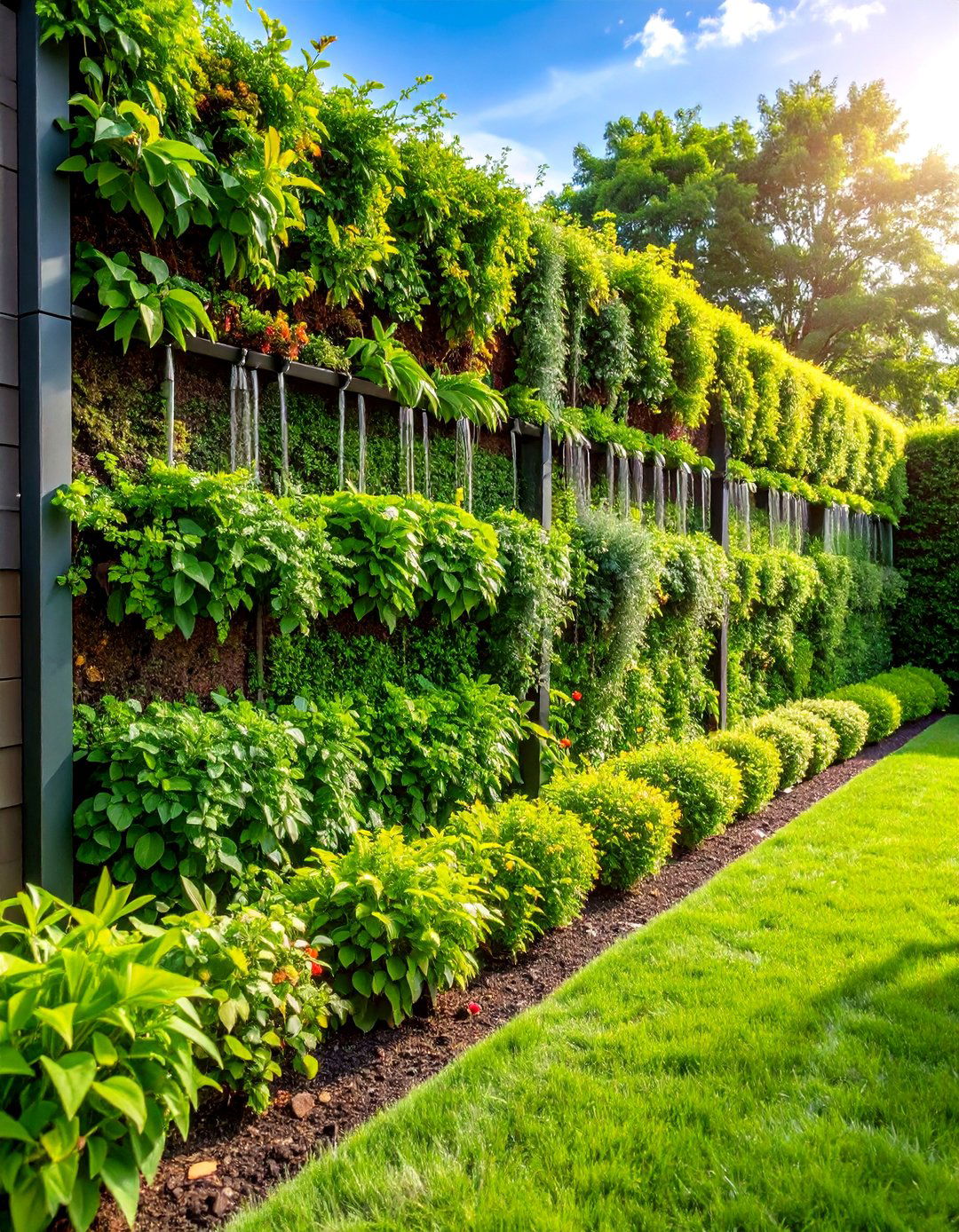
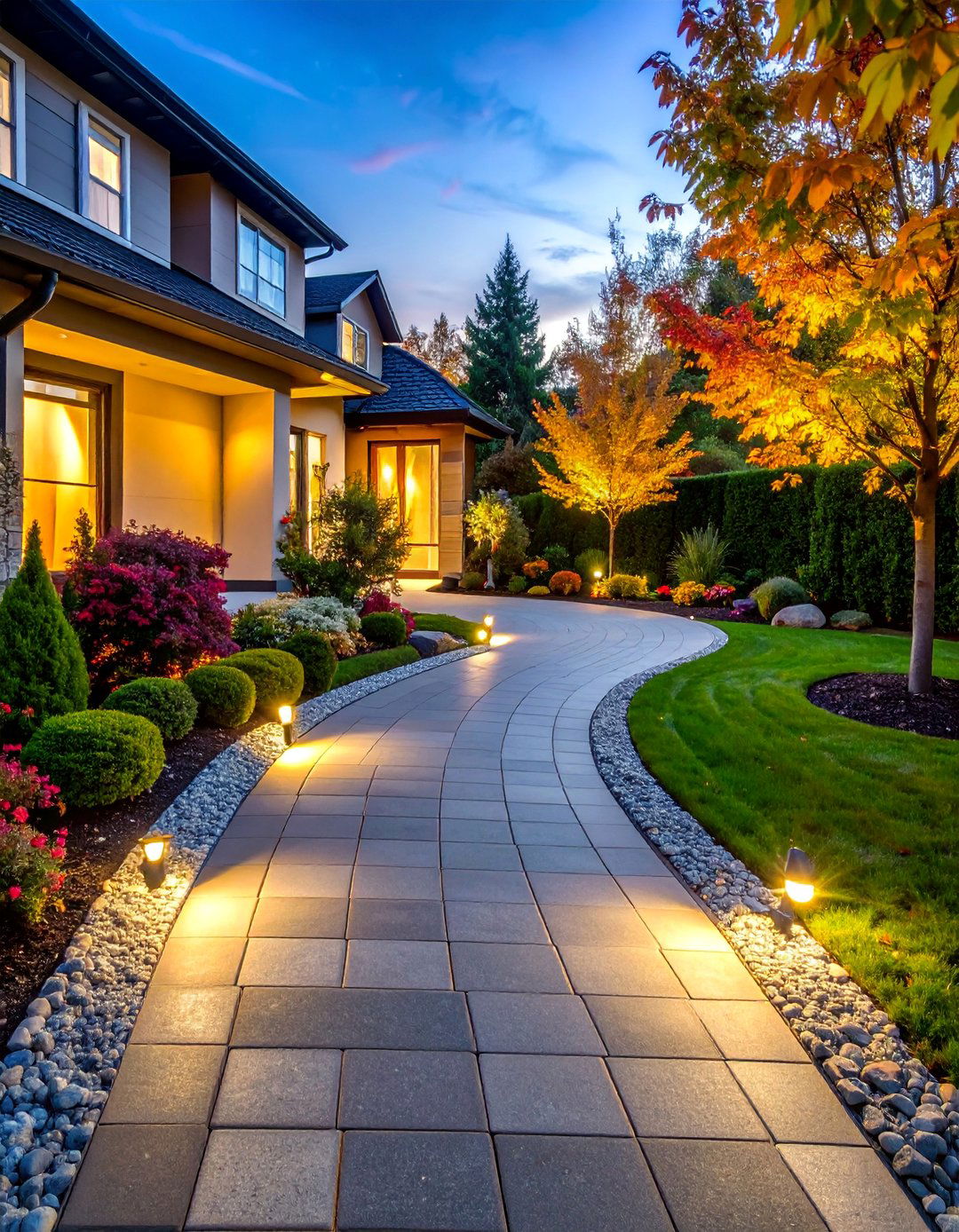
Leave a Reply